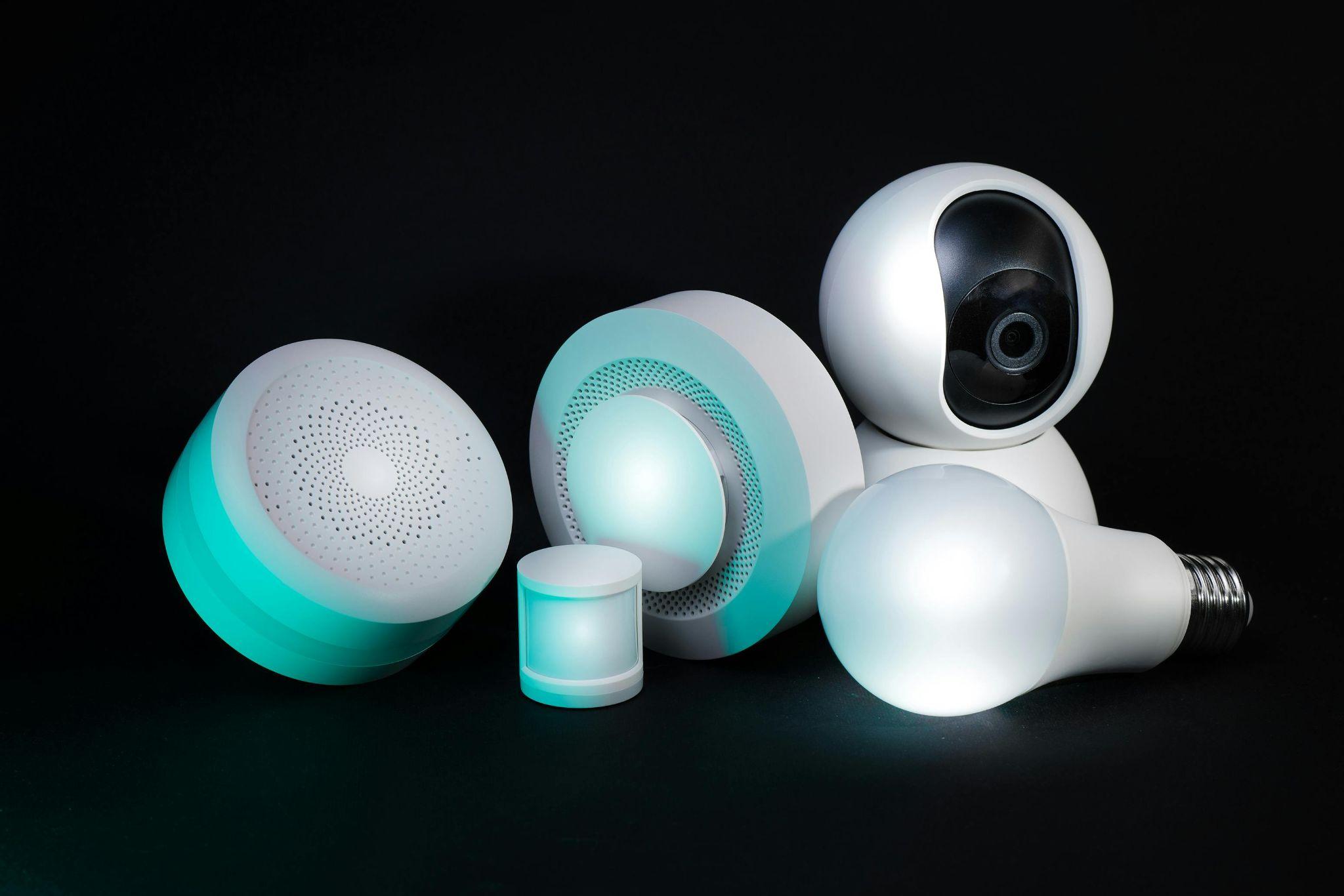In the rapidly evolving landscape of home automation, smart home hubs have emerged as the cornerstone of a truly connected living space. These intelligent devices serve as the central nervous system of a smart home, seamlessly integrating various internet-connected gadgets and appliances to create a cohesive and efficient ecosystem. By leveraging the power of smart home hubs, homeowners can transform their living environments into responsive, automated sanctuaries that adapt to their preferences and routines.
What is a Smart Home Hub?
A smart home hub is a sophisticated device that acts as the command center for your connected home. It serves as a bridge between your various smart devices and your home network, enabling seamless communication and coordination among different components of your smart home ecosystem.
The Role of Smart Home Hubs
Smart home hubs play a crucial role in creating a unified and efficient smart home experience. They facilitate:
- Centralized Control: Manage multiple devices from a single interface
- Automation: Create routines and schedules for your smart devices
- Interoperability: Enable communication between devices from different manufacturers
- Voice Control: Integrate with voice assistants for hands-free operation
- Remote Access: Control your home devices from anywhere via smartphone apps
Devices typically connected to smart home hubs include:
- Smart lights and bulbs
- Thermostats and HVAC systems
- Door locks and security cameras
- Smart speakers and displays
- Motion sensors and smoke detectors
- Smart appliances (refrigerators, washing machines, etc.)
Types of Smart Home Hubs
Smart home hubs come in various forms, each catering to different user preferences and ecosystem requirements:
| Hub Type | Description | Pros | Cons |
|---|---|---|---|
| Voice-Controlled | Hubs with built-in voice assistants (e.g., Amazon Echo, Google Nest) | Intuitive control, multifunctional | May have privacy concerns |
| App-Based | Software hubs that run on smartphones or tablets | No additional hardware required, portable | Depends on smartphone availability |
| Hardware-Specific | Dedicated hub devices (e.g., Samsung SmartThings) | Robust connectivity, often more reliable | Additional device to manage |
| Router-Integrated | Smart home features built into Wi-Fi routers | Reduces device clutter, improves network integration | Limited compared to dedicated hubs |
Each type of hub offers unique advantages, and the choice often depends on the user’s existing smart home ecosystem and personal preferences.
Top Smart Home Hubs in 2024

As we delve into 2024, several smart home hubs stand out for their advanced features, compatibility, and user-friendly interfaces. Let’s explore the top contenders in the market.
Amazon Echo Hub
The Amazon Echo Hub has evolved into a powerhouse of smart home control, leveraging the vast ecosystem of Alexa-compatible devices.
Key Features:
- Advanced Voice Control: Alexa’s natural language processing for intuitive commands
- Zigbee and Matter Support: Built-in radios for direct device connection
- Customizable Touchscreen: 8-inch HD display for visual control and information
- Multi-Room Audio: Synchronize music and announcements across Echo devices
- Privacy Controls: Physical camera shutter and microphone off button
| Aspect | Rating (out of 5) |
|---|---|
| Device Compatibility | 4.8 |
| Ease of Use | 4.7 |
| Voice Recognition | 4.9 |
| Smart Home Integration | 4.8 |
| Privacy Features | 4.6 |
The Amazon Echo Hub excels in its extensive device support and advanced voice control capabilities, making it an excellent choice for those deeply invested in the Alexa ecosystem.
Google Nest Hub
The Google Nest Hub leverages the power of Google Assistant to offer a seamless smart home experience, particularly for users already invested in the Google ecosystem.
Distinctive Features:
- Visual Responses: Utilizes the display for rich, visual feedback to voice commands
- Sleep Sensing Technology: Optional feature for sleep tracking without wearables
- Hands-Free Calling: Make video calls using Google Duo or Meet
- Contextual UI: Adapts the interface based on time of day and user habits
- Enhanced Audio: Improved speakers for better music and voice assistant clarity
Comparison with Amazon Echo Hub:
| Feature | Google Nest Hub | Amazon Echo Hub |
|---|---|---|
| Voice Assistant | Google Assistant | Alexa |
| Display Size | 7-inch or 10-inch | 8-inch |
| Sleep Tracking | Yes (2nd Gen) | No |
| Built-in Zigbee | No | Yes |
| Video Calling | Google Duo/Meet | Alexa Calling |
The Google Nest Hub shines in its integration with Google services and its adaptable user interface, making it ideal for those who rely heavily on Google’s ecosystem of apps and services.
Samsung SmartThings Hub
The Samsung SmartThings Hub stands out for its exceptional versatility and wide-ranging device compatibility, making it a top choice for users with diverse smart home ecosystems.
Strengths:
- Supports multiple protocols (Zigbee, Z-Wave, Wi-Fi)
- Extensive third-party device compatibility
- Robust automation capabilities
- Integration with Samsung appliances
- Local processing for faster response times
Weaknesses:
- Steeper learning curve for advanced features
- Requires a separate hub device (unless using compatible Samsung products)
Comparison with Leading Hubs:
| Feature | SmartThings Hub | Amazon Echo Hub | Google Nest Hub |
|---|---|---|---|
| Protocol Support | Zigbee, Z-Wave, Wi-Fi | Zigbee, Matter, Wi-Fi | Wi-Fi, Thread |
| Local Processing | Yes | Limited | Limited |
| Voice Assistant | Bixby (optional) | Alexa | Google Assistant |
| Display | No (uses smartphone) | Yes | Yes |
| Device Compatibility | Excellent | Very Good | Good |
The Samsung SmartThings Hub is the go-to choice for smart home enthusiasts who prioritize flexibility and wish to integrate a wide array of devices from different manufacturers.
How to Choose the Right Smart Home Hub

Selecting the ideal smart home hub requires careful consideration of your specific needs, existing devices, and future smart home plans.
Assessing Compatibility with Existing Devices
Ensuring compatibility with your current smart devices is crucial for a seamless integration. Consider the following:
- Protocol Support: Check if the hub supports the wireless protocols used by your devices (e.g., Zigbee, Z-Wave, Wi-Fi)
- Brand Compatibility: Verify if the hub works with the brands of your existing smart devices
- Future-Proofing: Look for hubs that support emerging standards like Matter for long-term compatibility
- Ecosystem Integration: Consider how well the hub integrates with your preferred voice assistant or smart home platform
- Expandability: Assess the hub’s capacity to add new devices and types of devices over time
Compatibility Checklist:
- List all your current smart devices and their protocols
- Check the hub’s compatibility list against your devices
- Research the hub’s track record for adding support for new devices
- Consider any planned future smart home purchases
Considering Ease of Use and Setup
A user-friendly setup process and intuitive interface are essential for a positive smart home experience. Compare the setup process of different hubs:
| Hub | Setup Time | User Interface | Mobile App Rating |
|---|---|---|---|
| Amazon Echo Hub | 10-15 minutes | Touch + Voice | 4.7/5 |
| Google Nest Hub | 5-10 minutes | Touch + Voice | 4.5/5 |
| Samsung SmartThings | 15-20 minutes | Smartphone App | 4.3/5 |
Factors to consider for ease of use:
- Quality of companion smartphone app
- Intuitiveness of voice commands (if applicable)
- Ease of creating automations and routines
- Availability of guided setup processes
- Quality of customer support and online resources
Integrating Smart Home Hubs with Internet Gear
Proper integration of your smart home hub with your existing internet infrastructure is crucial for optimal performance and reliability.
Setting Up a Seamless Connection
Follow these best practices to ensure a stable and efficient connection:
- Optimal Placement: Position your hub centrally in your home for best coverage
- Network Prioritization: Set up Quality of Service (QoS) on your router to prioritize smart home traffic
- Separate Network: Consider creating a separate Wi-Fi network for your smart devices
- Firmware Updates: Keep your hub and router firmware up to date
- Security Measures: Use strong, unique passwords and enable two-factor authentication
- Mesh Networking: Consider a mesh Wi-Fi system for larger homes to ensure consistent coverage
Troubleshooting Common Issues
Even with careful setup, issues may arise. Here are some common problems and their solutions:
- Device Disconnections:
- Ensure the hub is within range of your router
- Check for interference from other electronic devices
- Verify that your internet connection is stable
- Slow Response Times:
- Reboot your hub and router
- Check for bandwidth-hogging devices on your network
- Consider upgrading your internet plan if consistently slow
- Integration Failures:
- Double-check device compatibility
- Ensure all devices are on the latest firmware
- Try removing and re-adding the problematic device
- Automation Inconsistencies:
- Review and simplify complex automations
- Check for conflicting routines
- Ensure time zones and schedules are correctly set
Troubleshooting Tips:
- Restart your hub and problematic devices
- Check your internet connection speed and stability
- Review recent changes to your network or smart home setup
- Consult the hub’s official support forums or community discussions
- Contact the manufacturer’s customer support for persistent issues
Conclusion
Smart home hubs have revolutionized the way we interact with our living spaces, offering unprecedented levels of control, automation, and efficiency. By carefully selecting the right hub for your needs and properly integrating it with your existing internet gear, you can create a truly connected home that enhances your comfort, security, and daily routines.
When choosing a smart home hub, consider your specific requirements, the devices you already own or plan to purchase, and the level of technical expertise you’re comfortable with. Whether you opt for the voice-controlled convenience of an Amazon Echo Hub, the Google ecosystem integration of a Nest Hub, or the versatile compatibility of a Samsung SmartThings Hub, the key is to select a solution that aligns with your lifestyle and smart home vision.
Remember that the world of smart home technology is constantly evolving, with new devices and standards emerging regularly. By investing in a flexible and well-supported smart home hub, you’ll be well-positioned to adapt to future innovations and continue expanding your connected home ecosystem for years to come.

